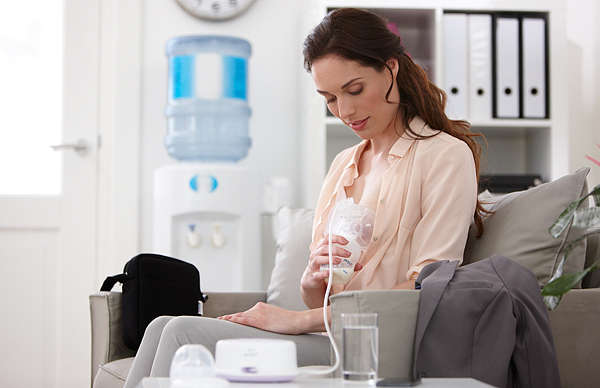
All you need to know about Pumping Breast Milk
23 Sep 2015 | 4 min Read
Prisha Lalwani (Mummasaurus)
Author | 71 Articles
How to pump and store breastmilk while breastfeeding? How long do I pump breast? How to pump and store breastmilk while at work? How to increase breastmilk? How to maintain enough milk supply and to provide breastmilk to your baby even when you are away? How to increase breastmilk supply when you have to feed twins or more?
The answer to your questions on how to increase breastmilk and store it – making it available when you may not be around.
Why does breastmilk need to be pumped?
– To boost your milk supply, in case you seem to be making less than what your child needs
– To feed a premature baby
– To feed a baby when you may be at work, or want to take some time off from taking care of the baby
– To have milk ready for a mid-night feed, where you or your partner can both feed the breastmilk to baby with a bottle.
– Relieving engorged breasts, when your baby seems to be full
– In case you are hospitalized and cannot have the baby around
– In case you are taking some medication wherein your doctor has advised you to not feed the child (to keep up with your production)
How to Express or Pump Breastmilk
Breastmilk can be drawn by:
1. Expressing milk from breasts by hand. This method may be used when extracting milk is a rare or one time activity.
Lean forward (to make use of gravity) and place the index finger and the thumb on either side of your breast, forming a “C” with the rest of your hand. Press your fingers back towards the chest, using a rolling motion to express milk. You need to stimulate the area beneath the nipple, instead of pulling or tugging. It may take some bit of a practice for you to find out the spot.
Store expressed milk in a sterilized container preferably with a wide mouth. You can also secure it in the feeding bottle directly. After you have expressed enough, cover the container with a tight lid to let any microbes contaminate it.
2. Pumping is done with the help of breastmilk Pumps. They have a cup like shield that covers the breast and a handle that creates suction to draw milk. This is directly transferred to a container attached to the pump. Most often, these containers are a feeding bottle, where you can detach the pump and attach the bottle cap and nipple for direct use of the baby, or storage.
Pumps can be manual or electric. A manual pump has a handle or a bulb that needs to be pressed continuously in order to extract milk. It takes about 45 minutes to empty a breast, and can be used if pumping is not required several times a day.
Electric pumps have a motor attached to the apparatus that does the suctioning for emptying the breasts. It takes about 15 minutes to empty a breast and is very efficient as well as convenient.
Points to remember:
– Ensure your hands have been cleaned with an antiseptic soap
– Sterilize any equipment that is to come in contact with your breast, or breastmilk, including pump and bottle parts
– Pump milk when you feel your breasts are full, and you are relaxed
– Milk tends to generate better if you think of your baby, or see them, or hold a baby item like their blanket or clothes that have their smell
– Pumping is, on an average, done once in every 3 hours
– Breastmilk can be frozen for purposes of utilizing it later
With the challenges of modern life, taking care of your child may be difficult, but proper guidance on how to increase breastmilk and how to pump breastmilk come across as a great help. Investing in a convenient hand pump can take the experience of breast feeding to a new level, making it convenient and beneficial for the mother as well as the baby.
Explore the entire collection of articles: Breastfeeding Tips
A


Suggestions offered by doctors on BabyChakra are of advisory nature i.e., for educational and informational purposes only. Content posted on, created for, or compiled by BabyChakra is not intended or designed to replace your doctor's independent judgment about any symptom, condition, or the appropriateness or risks of a procedure or treatment for a given person.
